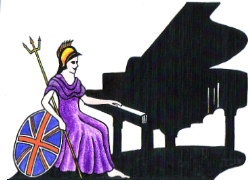Teachers, Accompanists and Piano Entertainers in the UK

UK Piano Page

5a Garnett Close
Watford Herts
Watford, Hertfordshire WD24 5GN
England
Piano Emporium Watford serving the local piano
4A Empress Park
Empress Road, Southampton
Southampton, Hampshire SO14 0JX
England
Established in 2004, we supply and repair the
Hampstead, London
England
Experienced piano teacher and accompanist
Great Harwood, Lancashire
England
I teach piano & violin from my own home in Great
Kensington, London SW5
England
Kensington Piano removals and disposals operating
Music Festival for performers and guests Our 10th
18-06-2022 12:30PM
The Morecambe Bay Piano Group was set up to extend
11-12-2021 01:00PM
The Morecambe Bay Piano Group was set up to extend
08-01-2022 01:00PM
The Morecambe Bay Piano Group was set up to extend
12-02-2022 01:00PM
Tuning Temperaments
How many piano tuning temperaments are there?
There are countless variations, but most fall within three major categories;
1. Meantone, which generally concentrated the dissonance into a few unusable intervals (often called "wolf" intervals), so that the others could be Just. These are often called "restrictive" tunings, since there are certain intervals that are not usable. Good intervals are really good, bad ones are really bad. The Meantone era was approx. 1400-1700
2. Well-Temperament, which gives more consonance to the most often used keys, and more dissonance to the lesser used ones. Though not equal, these tunings are "non-restrictive" because all intervals can be used. The intervals range from Just to barely acceptable. Well-temperament refers to a genre, not a specific tuning. The Well-Tempered era is approx. 1700-1880.
3. Equal Temperament, which spreads the dissonance equally among all intervals.
There is no difference in consonance or dissonance between any keys, thus, there are no good ones or bad ones. Equal temperament represents a complete average. Dates of its acceptance are debated, but there is ample evidence that it was widely available by 1900 and is the predominate tuning on keyboards, today.
r.